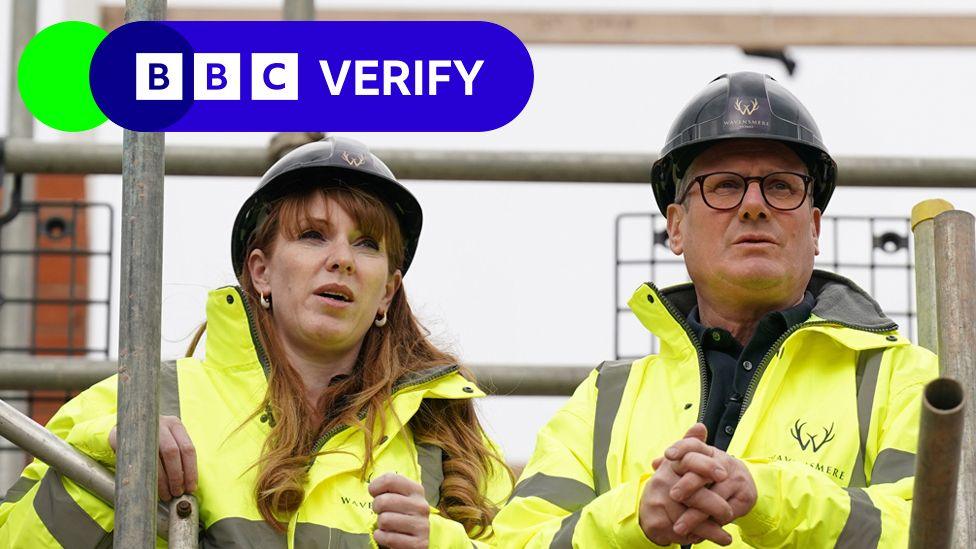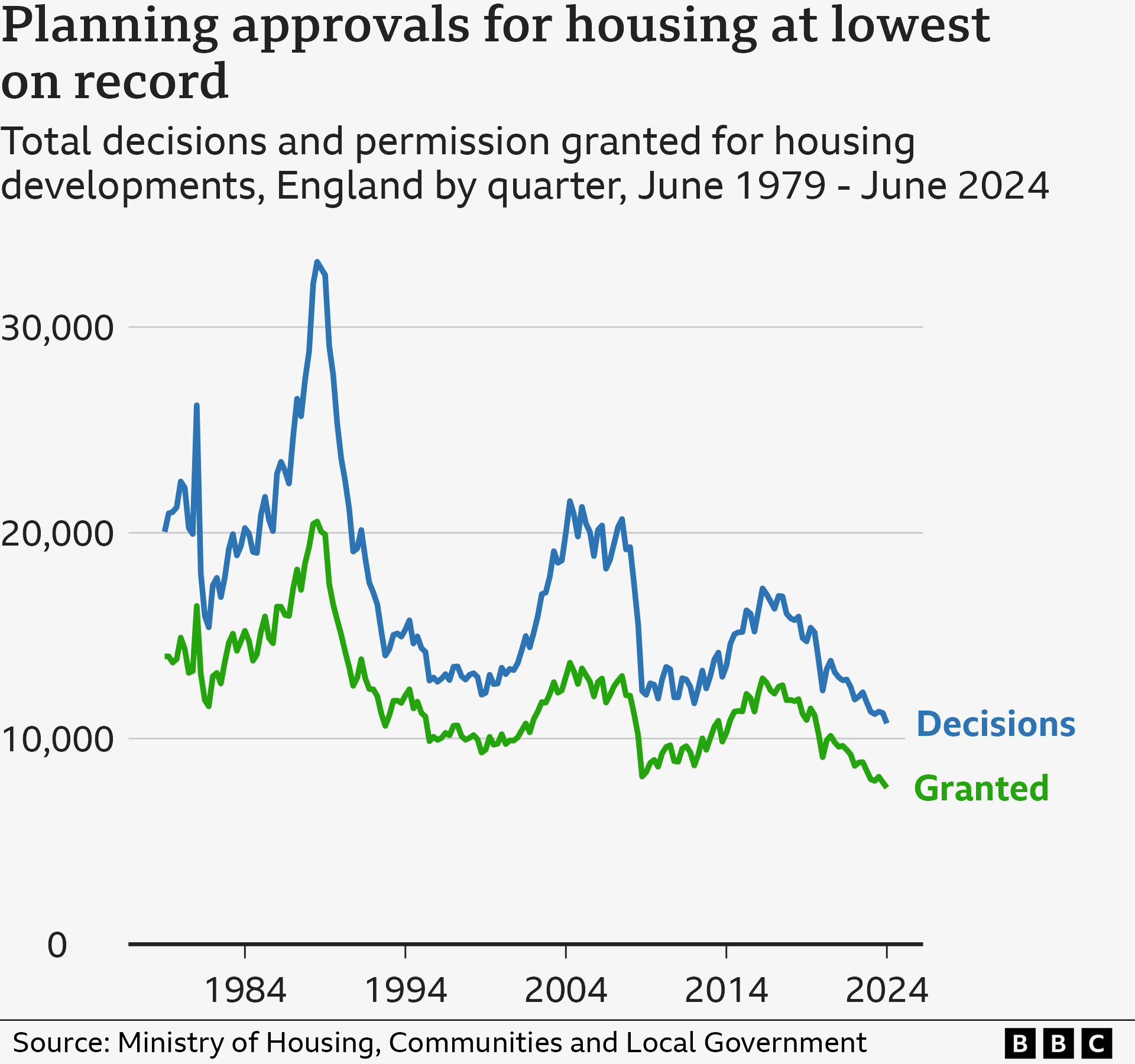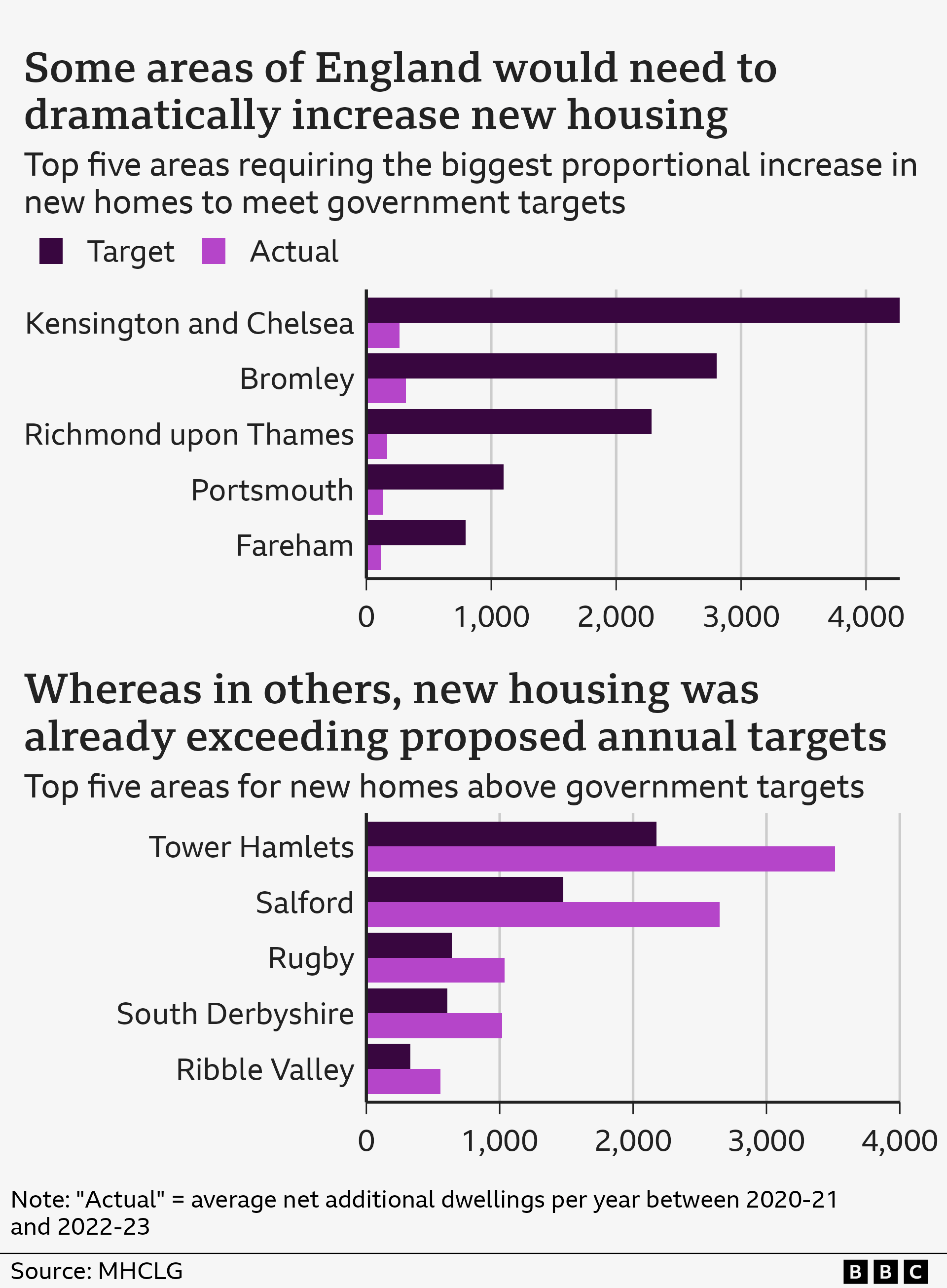Labour’s housing challenge as planning permission at record low

Deputy Prime Minister Angela Rayner and PM Sir Keir Starmer have set a target of 1.5 million new homes in England in five years
- Published
The number of housing projects given the go-ahead by councils in England reached a record low in the final months of the last government.
Planning permission data for the year to June showed only 31,562 housing proposals were granted - 8% down in a year.
Experts say developers are reluctant to put in planning bids because of costs and a lack of confidence in the market - highlighting the challenge for Labour which is pledging an additional 1.5 million homes in five years.
The government said it was committed to its target, and was working to ‘unblock’ stalled projects.
Between April and June this year, just 7,609 housing projects were granted permission in England - ranging from applications to build a single property to proposals for large new housing developments - the lowest since records began in 1979.
Keir Starmer has pledged to take on so-called “nimby” (not in my back yard) activists who are blocking new housing developments and has floated the idea of new “planning passports” to speed the progress of projects through the system.
But this data shows councils are not rejecting a substantially higher percentage of applications.
Instead, the total number of planning applications to build new homes brought forward by developers has dropped sharply.

There were just under 44,500 residential applications decided in the year to June, falling every year since 2017. More than a quarter of those were rejected - only a slight increase on previous years.
Neal Hudson from Built Place, a housing research company, said: "People aren’t buying new homes because of high prices and high mortgage rates. Housing associations aren’t paying for new affordable homes because they’re focussed on fixing their existing ones. And many investors aren’t buying because they’re worried about tax and regulation.
"As a result, housebuilders and developers have reacted by cutting back on their plans for how many homes they intend to build, and hence how many they’re prepared to try and get through planning."
Nevertheless, most analysts agree planning reform is important if the government is to increase the rate of new housing delivery.
Freddie Poser from PricedOut, which campaigns for affordable house prices, said the government’s proposed changes to planning rules that could to allow more housebuilding in suburbs, "exactly where homes are most needed,” would be “a good start”.
One suggestion has been "planning passports" which would allow proposals that meet design and quality standards to receive a default "yes".
A consultation on Labour's proposed housebuilding targets ends on Tuesday, external.
The planning application data will be monitored to check if councils are meeting their targets over the next five years.
Kensington and Chelsea, the least affordable place to buy a home in the UK, would require an additional 4,271 new homes a year - almost 16 times higher than its latest average of just 267.
Its council said it was the smallest London borough, and did not have enough land available to meet the government’s proposed targets.
However, some areas are already seeing more new homes added than the new target would require.
For example, Salford would be expected to add 1,475 homes a year, but added an average of 2,648 a year between 2020 and 2023.

Related topics
- Published2 August 2024
